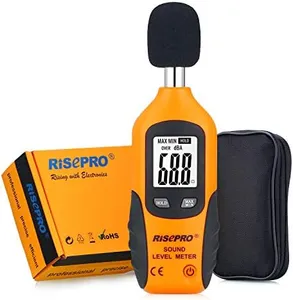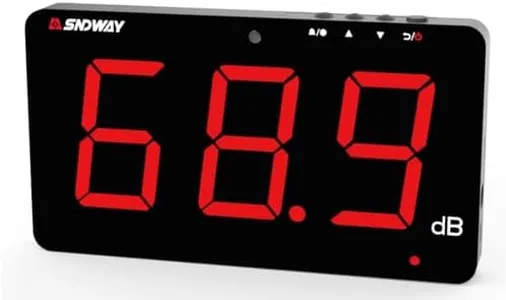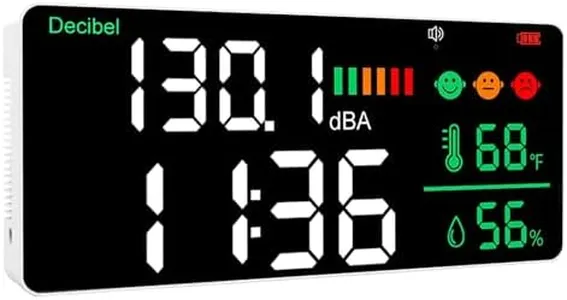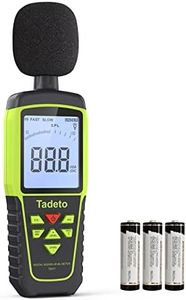We Use CookiesWe use cookies to enhance the security, performance,
functionality and for analytical and promotional activities. By continuing to browse this site you
are agreeing to our privacy policy
10 Best Sound Level Meters 2025 in the United States
How do we rank products for you?
Our technology thoroughly searches through the online shopping world, reviewing hundreds of sites. We then process and analyze this information, updating in real-time to bring you the latest top-rated products. This way, you always get the best and most current options available.

Buying Guide for the Best Sound Level Meters
When choosing a sound level meter, it's important to understand the key specifications that will help you select the best device for your needs. Sound level meters are used to measure the intensity of sound in decibels (dB), and they are essential tools in various fields such as environmental noise assessment, workplace safety, and audio engineering. By understanding the key specifications, you can ensure that you pick a sound level meter that meets your specific requirements and provides accurate and reliable measurements.AccuracyAccuracy refers to how close the measurements of the sound level meter are to the actual sound levels. This is important because accurate measurements are crucial for making informed decisions based on the data collected. Accuracy is usually expressed in decibels (dB), with lower values indicating higher accuracy. For general use, an accuracy of ±1.5 dB is often sufficient, while more precise applications may require an accuracy of ±1 dB or better. Consider your need for precision when selecting a sound level meter.
Frequency RangeThe frequency range of a sound level meter indicates the range of sound frequencies that the device can measure, typically expressed in Hertz (Hz). This is important because different applications may require measurement of different frequency ranges. For example, human hearing ranges from 20 Hz to 20,000 Hz, so a sound level meter used for general noise assessment should cover this range. If you are measuring specific types of noise, such as low-frequency industrial noise or high-frequency ultrasonic noise, ensure the meter's frequency range matches your needs.
Dynamic RangeDynamic range refers to the range of sound levels that the meter can accurately measure, from the quietest to the loudest sounds. This is important because it determines the versatility of the meter in different environments. A wider dynamic range allows the meter to measure both very quiet and very loud sounds without distortion. For general use, a dynamic range of 30 dB to 130 dB is usually sufficient. If you need to measure extremely quiet or extremely loud sounds, look for a meter with a broader dynamic range.
Weighting FiltersWeighting filters are used to adjust the sound level measurements to reflect how humans perceive sound. The most common filters are A-weighting (dBA), which mimics human hearing sensitivity, and C-weighting (dBC), which is used for peak measurements and low-frequency noise. This is important because different applications may require different weighting filters. For general noise assessment, A-weighting is typically used. If you need to measure specific types of noise, such as low-frequency industrial noise, consider a meter with C-weighting or other relevant filters.
Data LoggingData logging refers to the ability of the sound level meter to record and store measurements over time. This is important for applications where continuous monitoring and analysis of sound levels are required, such as environmental noise assessments or workplace noise monitoring. Data logging capabilities can vary, with some meters offering basic storage and others providing advanced features like time-stamped data and connectivity to computers or mobile devices. Consider your need for data logging and choose a meter that offers the appropriate level of functionality.
Display and InterfaceThe display and interface of a sound level meter refer to how the measurements are presented and how the user interacts with the device. This is important because a clear and user-friendly interface can make it easier to operate the meter and interpret the results. Look for a meter with a clear, easy-to-read display and intuitive controls. Some meters offer additional features like backlit displays for low-light conditions or touchscreens for easier navigation. Consider your preferences and the conditions in which you will be using the meter when selecting a display and interface.
Most Popular Categories Right Now
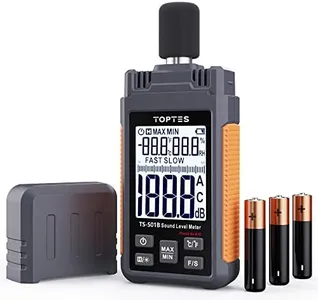

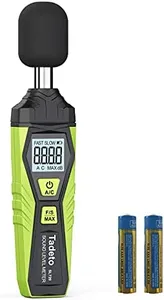
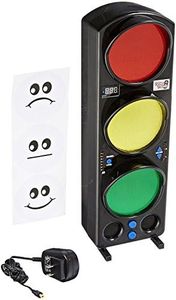

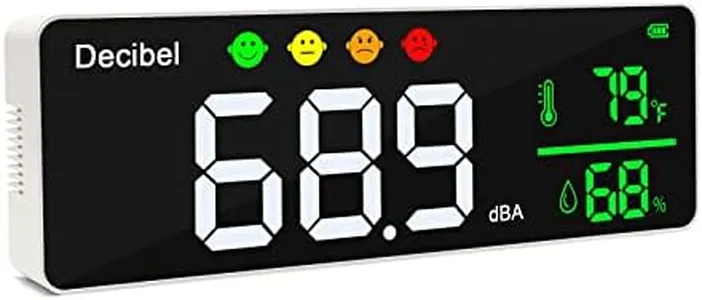
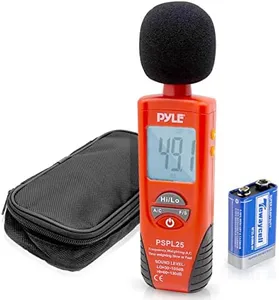
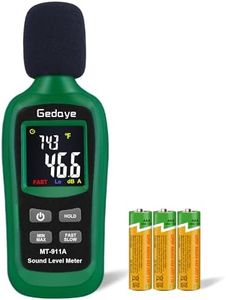
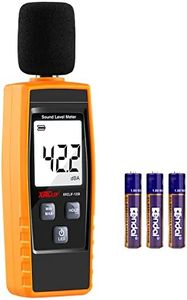
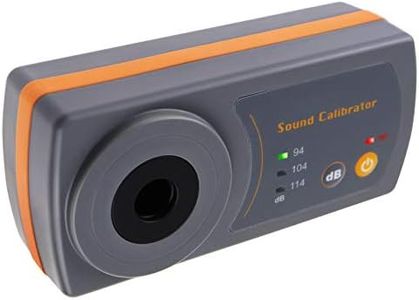

![[Rechargeable 3IN1 Decibel Meter] WESTOBIG Sound Level Meter, Digital dB Meter Noise Meter 30dB to 130dB Portable SPL Meter MAX Data Hold with Color Display Backlight](https://images-proxy.bestreviews.guide/8NXeDafbT_kywt9O9rhWw8gZpPQ=/0x300/https://m.media-amazon.com/images/I/41EPu2UuIQL._AC_CX679_.jpg)
